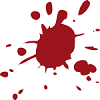4.12: Quality Control
- Page ID
- 122353
For Chemistry Laboratory tests, laboratory protocol requires the use of two different quality control samples, QC-A and QC-B, during an analytical run. The control limits are set at 95% confidence limits. At the completion of one set of measurements, a technologist notes that one control falls within the specified limits, but the second control is out of control, falling between +2 SD and +3 SD on the Levy-Jennings chart.
QUESTION
What is the technologist’s best course of action?
Questions to Consider
- What is the probability that analysis of the quality control specimen will yield a result of ± 1 SD about the mean, if the instrument is working perfectly? What is the probability of a result falling within ± 2 SD of the mean under the same conditions? What is the probability of a result being greater than ± 2 SD under the same conditions?
- If one repeats the analysis immediately, what is the probability that the result will be within the ± 2 SD range if the instrument is working within specifications?
- If an instrument has, in fact, become mis-standardized because of electronic or reagent drift, and a quality control specimen result is outside the ± 2 SD range, what would you expect the result of an immediate repeat analysis of the same quality control sample to be?
- Answer
-
Given one result within the reference range and the other between two and three SDs from the mean, the technologist knows that the result greater than 2 SD could be a random chance event (2.5%) and that the instrument may b eworking perfectly. The analysis of the QC specimen that was out of range should be repeated. If the result falls within ± 2 SD, it can be assumed that the out-of-range result was a random chance event and that the instrument is operating properly. The results should be sent out.
If both QC specimens are now within range, i.e. QC-A and the repeat QC-B, but both are near the upper or lower 2 SD limits, the technologist may want to recalibrate the instrument anyway since these results may reflect a small, but definite, shift. The technologist would probably send most of the patient results out, repeating only those results with borderline values.
If, on the other hand, the repeat analysis of the out-of-range quality control pool yields a result that is still out of range, there is a very high likelihood that there is a real shift in the calibration and that this QC result reflects the new, biased population. The technologist should recalibrate and re-analyze all the patient samples up to the last within-range quality control result.
The above quality control decisions are based on the multirule Shewhart rules, described on in Chapter 21.
Answers to Questions to Consider
- The target range for quality control specimens of ± 2 SD (95% confidence limits), assumes a normal (i.e. Gaussian or symmetrical) distribution of results about the mean value. Thus, 66.6% of all results should fall within the ± 1 SD limits about the mean and approximately 95% should fall within ± 2 SD (see Figure 19-5, Page 346) if the instrument is working perfectly. On the other hand, use of a 95% confidence interval accepts that 5% of all analyses will fall outside of the allowable limits for a perfectly working instrument. Thus, 25/1,000 results will be greater than + 2 SD from the mean and 25/1,000 will be less than - 2 SD from the mean.
- For a single analysis, the probability of results falling within the current 95% target distribution remains the same. Thus, there is a 95% chance that a repeat analysis of the quality control sample, analyzed immediately following a random value which is outside the 2 SD limits, will yield a result falling within the ± 2 SD range if the instrument is working within proper specifications.
- If the instrument is really miscalibrated, there will be a shift (bias) of the results towards a different population of results, i.e. one with a higher or lower mean value than that of the true target population for a properly calibrated instrument. Thus, an immediate repeat analysis of a quality control pool sample will have a 95% chance of falling within the population of results reflected by the new calibration, i.e. higher or lower than the normally accepted range (see Figure 21-1, Page 391).


